Within the representations of the Mother Goddess belonging to the culture of Ozieri (or San Michele) [1], there is the Mother Goddess of Porto Ferro. It is the representation of a naked and erect female figure with a circular head and face slightly angled upwards, a long and thin neck, a trapezoidal trunk, the arms folded at right angles on the waist and finally the abdomen and legs condensed into a very small semi-conical volume that widens along the sides. The only figurative elements in relief are the long triangular nose, the two conical breasts and the rear prominence of the buttocks. Also on the back is a slight vertical incision to indicate the vertebral column, while a series of regular and close notches along the contour of the shoulders and arms could indicate a sort of stole.
It is a gaunt, angular female figure in marble, morphologically and symbolically very different from the volumetric Mother Goddess of Bonu Ighinu, but with enormous symbolic value; the style is cruciform or planar (Lilliu 1999). We therefore witness a great change over time: we pass from numerous specimens with soft and welcoming shapes, as if to symbolize a comforting, protective and dispenser of abundance divinity, to one with a skeletal shape, certainly more distant, transcendent and detached.
She is called Goddess Death, almost all the statuettes are white, with rigid shapes, the arms disappear or are schematic and the body ends in a defined cone, "chrysalis" or cusp shape; they are flat figures, with barely sketched breasts, a long neck and only the nose stands out in the face, which is increasingly shaped like a bird's beak. A Goddess increasingly distant from reality and abstract, belonging to the Goddesses that Gimbutas calls "Strict Lady", in the case of the Mother Goddess of Porto Ferro, the arms detached from her body constitute a local stylistic variant; the schematization of these brings us back to the sacred gesture of placing the hands under the breasts, already present in many other statuettes.
This kind of late Neolithic cruciform statues come from both settlements and burials; clay ones are more frequent in villages, while those created with stone have been found mainly inside tombs. The Eneolithic figurines with a perforated plaque pattern appear almost exclusively in funerary and cultic contexts; this distances from the hypothesis of the creation of anthropomorphic figurines for playful purposes. Precisely the places where they have been found prove that behind them there is a high and shared meaning that goes far beyond time and space, uniting different populations of different ethnic groups over the ages, thousands of kilometers apart. Numerous anthropological and archaeological literature attributes a higher value to these objects, an archetype with enormous generative value and strongly connected to the history of the populations themselves. The figurine was found together with 4 other very similar fragments.
Of the second fragment only the head, neck and part of the torso with a remnant of arms are preserved; has maximum dimensions of cm. l 8,10 x sp 0,9 xh 12,00.
Of the third fragment, as of the second, only the head, neck and part of the torso with a remnant of arms are preserved; has maximum dimensions of cm. l 9,20 x sp 1,30 xh 13,00. The fourth fragment lacks the head and the terminal part of the body, while the chest and arms are complete; has maximum dimensions of cm. l 8,70 x sp 1,20 xh 11,20.
Of the fifth fragment only the bust is preserved, without the head, arms and terminal part of the body; has maximum dimensions of cm. l 4,00 x sp 1,70 xh 8,90.
[1] The Culture of Ozieri, dated to 3200/2800 BC, was defined as the first great Sardinian culture, its name comes from a cave (San Michele) near the city of Ozieri, where archaeological finds were found for the first time with an invoice never seen before that clearly identified a great cultural and social progress of the island's populations.
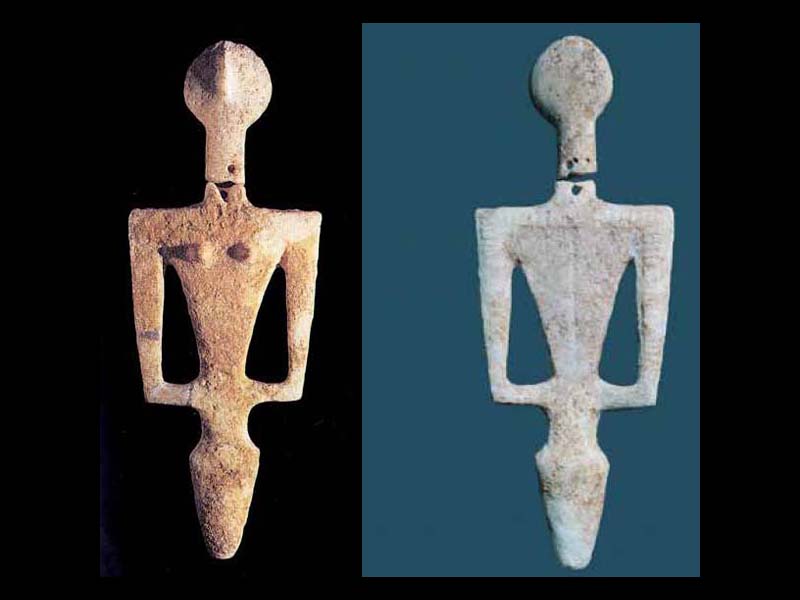
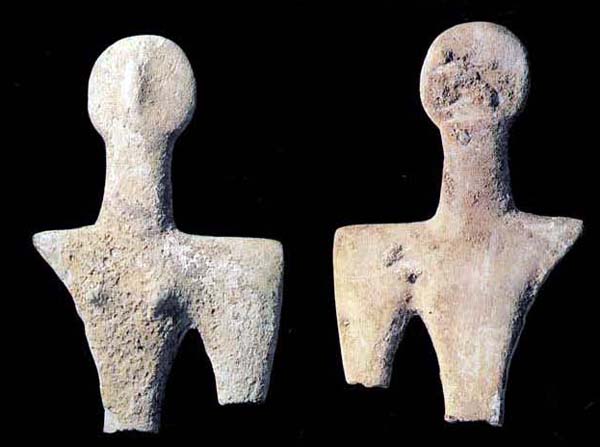
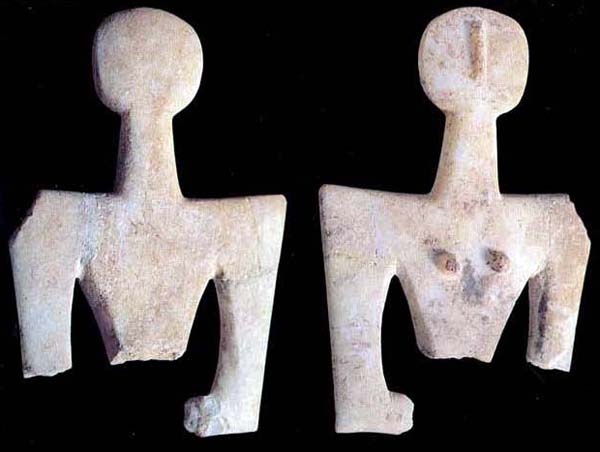
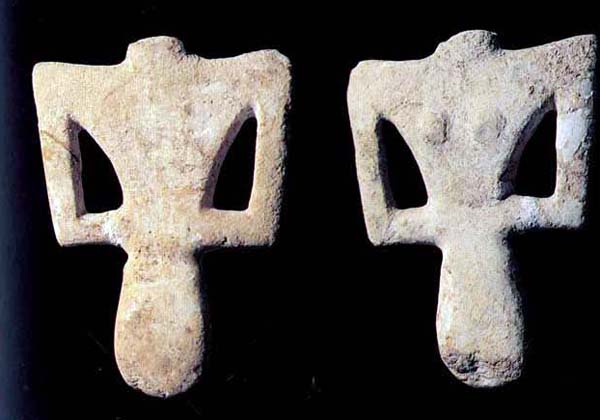
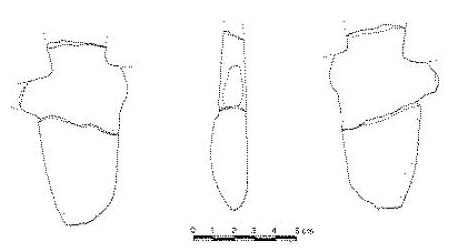
Historical notes
The statuette was found shortly after 1940 together with four other similar specimens in an uncontrolled excavation of an underground burial in the Porto Ferro area (Alghero).
CARD
LATEST PUBLISHED TEXTS
VISIT THE FACTSHEETS BY OBJECT

